
Why you should pay RMS Queen Mary a visit in Long Beach
For cruise and maritime enthusiasts alike, there is an ocean liner that you simply must visit – the legendary RMS Queen Mary. Based in Long Beach, California, this charismatic ship will both enchant and impress …
Forged in the midst of the Great Depression, RMS Queen Mary has defied the odds for her entire existence. Conceived as the transatlantic heir apparent to the ageing Mauretania, the opulent blueprint of Queen Mary took the best that Cunard and White Star Line had to offer and combined them after the rival lines themselves merged in 1934.
As she was built in Glasgow’s Clydebank, RMS Queen Mary was going to form a class all of her own. She was intended to become the finest ocean liner upon the sea, and a crippling global economy wasn’t going to stand in the way. Cunard threw all that they had at the project. Where there was a will, there would be a way. And that way should be decorated with Art Deco splendour, fine cuisine and comfortable beds.
Christened by Queen Mary herself on September 26, 1934, the illustrious Royal Mail Ship was ready to show everyone what she could do. Possessing standards of accommodation never yet seen on a liner in combination with a commanding service speed of 29 knots, Queen Mary had everything she needed to wow passengers worldwide.
Soon enough, Queen Mary had snatched the Blue Riband from her French rival Normandie while her passenger list became like an autograph book as countless celebrities travelled aboard. Wherever she went, Queen Mary’s reputation proceeded her – she was the epitome of ultimate luxury and the most civilised means of travel.
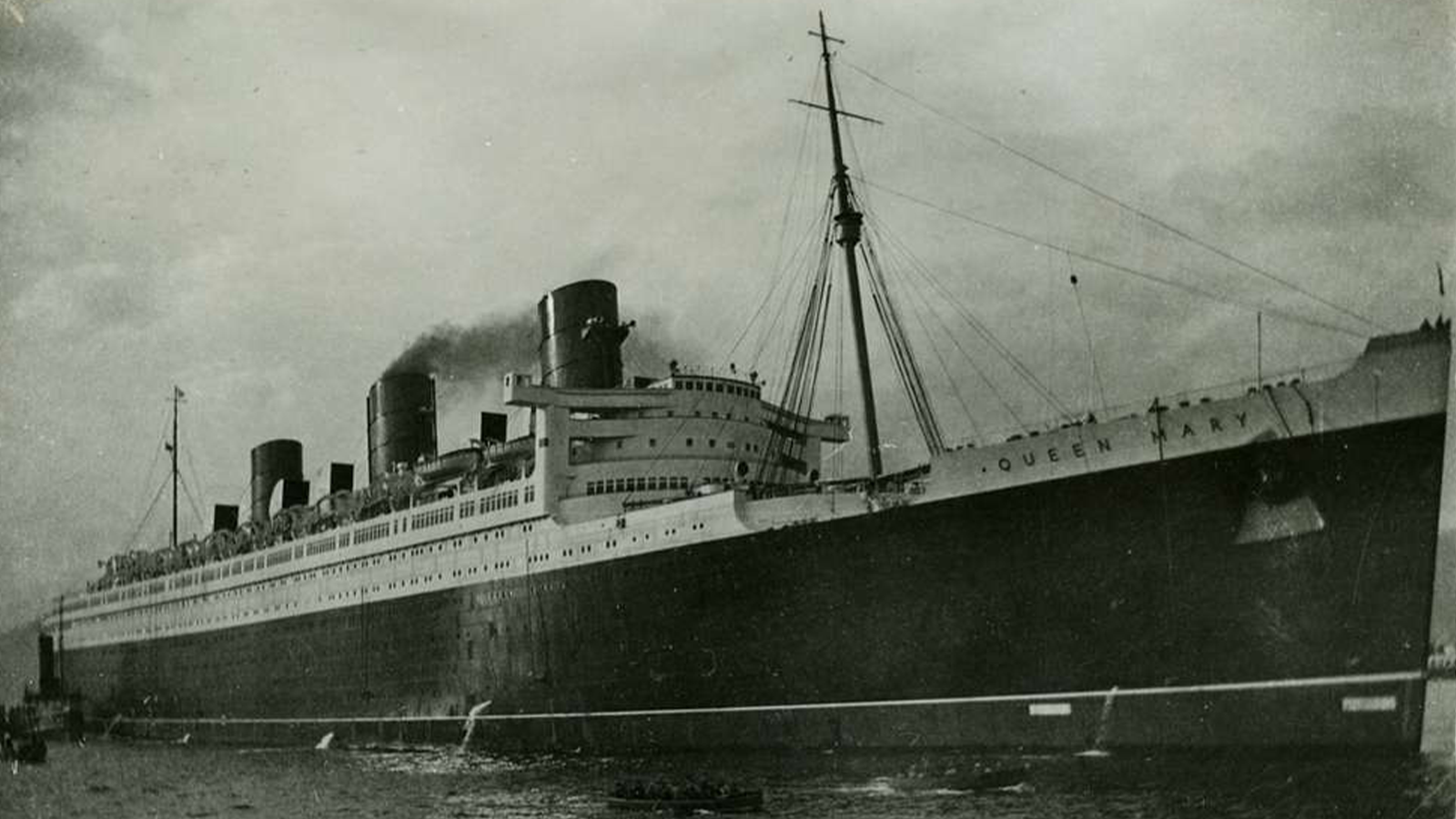
In March 1940, Queen Mary’s purpose transformed dramatically when she was drafted into military service. Swapping her decadent interiors for camouflage grey paint and naval guns, Queen Mary became one of the largest troopships and a notable force to be reckoned with. Her contribution to shortening World War II remains impressive to this day.
In 1947, as peacetime resumed, Queen Mary resumed her high-end passenger service. However, the world around her had changed. The increasing popularity of air travel, combined with costly strikes in the mid-1960s, forced Cunard to reconsider the fate of their now beloved liner.
Eventually, Cunard opted to retire and sell the Queen Mary. To many this was unthinkable, but Cunard remained firm in their decision; for the ship was now making a significant loss with every journey that she made.
In 1967, RMS Queen Mary was sold to the city of Long Beach in California for £1,230,000. Unlike many great ships before her, Queen Mary was impressively evading what would have been the inevitable scrapyard.
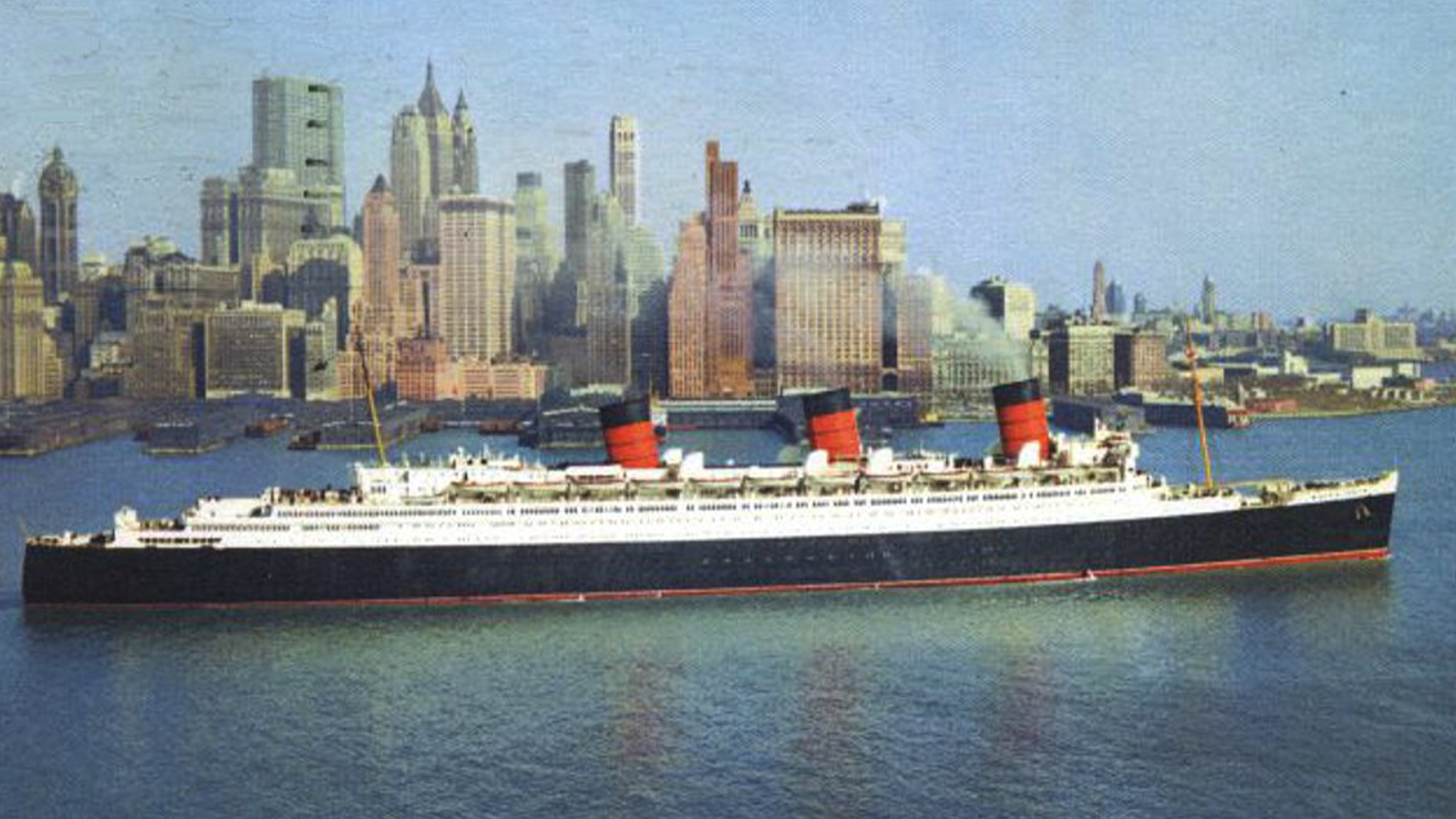
To celebrate, she embarked on a final and glorious 39-day tour. Numerous buffets – as well as champagne, caviar and Havannah cigars – were enjoyed at exuberant levels onboard while, outside, virtually the whole world fell over themselves to witness her go by.
In December 1967, RMS Queen Mary proudly docked in Long Beach where residents soon regarded her as their icon. Now, after almost nine decades and a lifetime that merits biography, RMS Queen Mary serves as a stunning hotel and visitor attraction.
For anyone who enjoys cruising, visiting the Queen Mary is a fascinating experience and to say that you’ve been aboard is a badge of honour. There are many reasons why you should pay RMS Queen Mary a visit in Long Beach. Here are our top reasons …
RMS Queen Mary represents the bygone grandeur of transatlantic travel
RMS Queen Mary is one of the most influential and recognisable ocean liners to have ever sailed the Atlantic. Even as she sits in an increasingly modern and rushed world, Queen Mary continues to possess the same allure, magic and opulence that made other grand historic liners and herself legendary.
Think of RMS Titanic, RMS Olympic, RMS Mauretania and RMS Queen Elizabeth. There was something indefinably special about these ships but all of them, bar Queen Mary, are gone.
RMS Queen Mary is a rare survivor from a bygone age, a real-life representative who holds the key to why we still remember and discuss ships of her kind – even decades after they have been lost.
Whereas others were sunk, employed as a film studio (and then destroyed) or simply lost to time, the Long Beach resident channels all those vessels responsible for the golden age.
To walk the panelled corridors and observe the sumptuous fittings of the Queen Mary is to understand human achievement and grand ambition as well as the history of design and transportation.
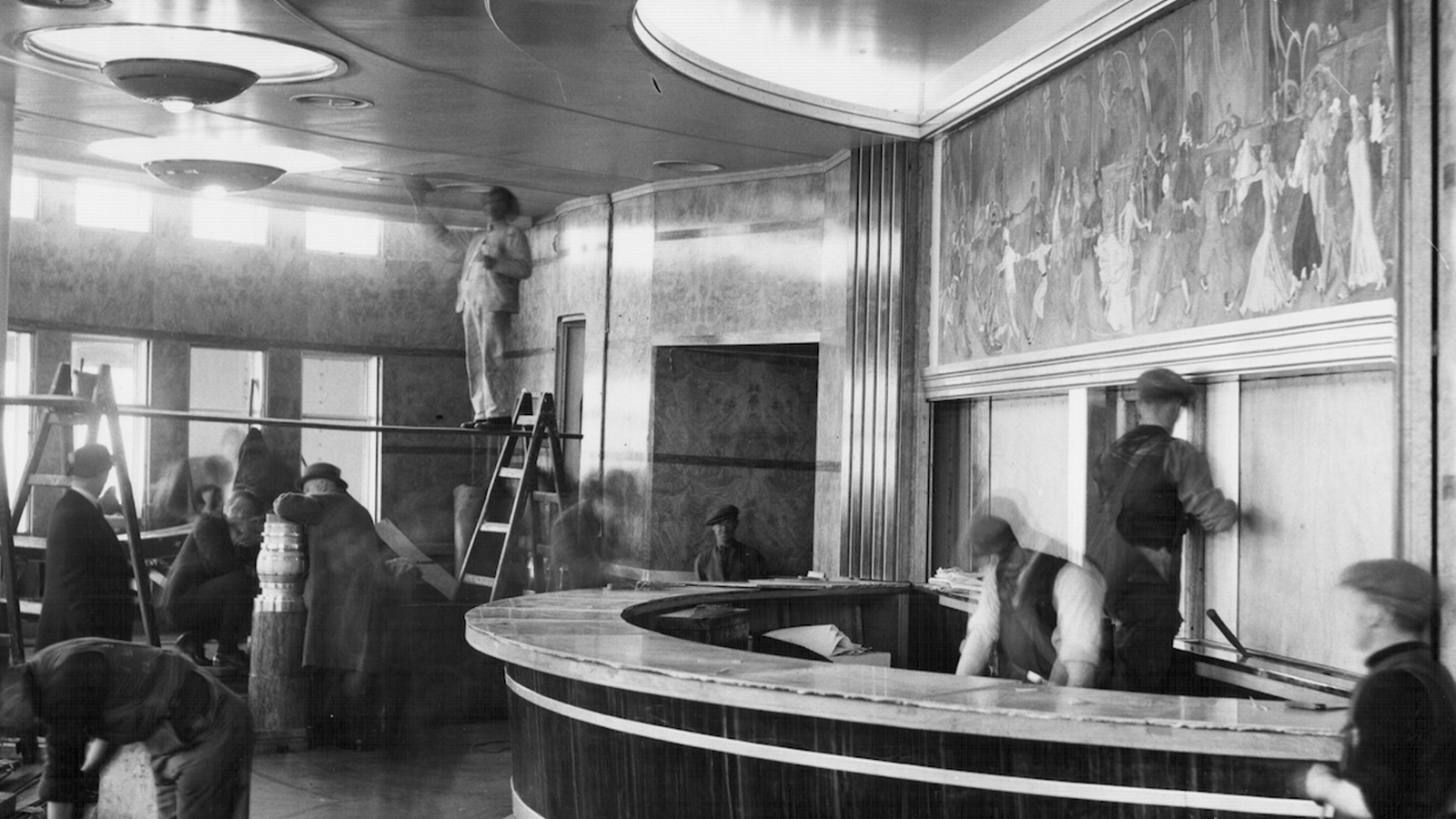
Thanks to the finest of materials and an interior that incorporates strong curvature and geometric design, the Art Deco inspired Queen Mary represents elegance, class and style. It’s no wonder she carried and thrilled over 2.2 million passengers during peacetime.
Stepping aboard the Queen Mary is the equivalent of going back in time to the era of glamourous transatlantic travel. The ex-Cunard flagship stands tall as a physical history lesson, as well as a delight to the senses. She educates and enthrals simultaneously, regardless of your age.
The cruise liner remains a symbol of pride for countless nations and those who have worked and travelled onboard. If you wish to understand how cruising came to be and why it continues to appeal throughout the generations, a visit to RMS Queen Mary will deliver and luxuriously so.
RMS Queen Mary delivered exemplary war service
Upon being called into duty during World War II, RMS Queen Mary and her sister ship, RMS Queen Elizabeth, were the largest troopships in history.
Stripped down, painted grey and fitted with naval guns, RMS Queen Mary made for a foreboding sight. She gained the nickname of the ‘Grey Ghost’ and, much like a fleeting spirit, proved elusive to all who tried to catch her. Queen Mary’s speed was her best defence and she utilised it to the full, even when laden with thousands of soldiers.
In her wake, followed a price on her head. Hitler offered the equivalent of $250,000 and the award of the Iron Cross to the U-boat captain that could find and sink her. Queen Mary’s response was to merely stick her finger in Hitler’s eye, hastily crossing the ocean no less than 72 times without enemy engagement.
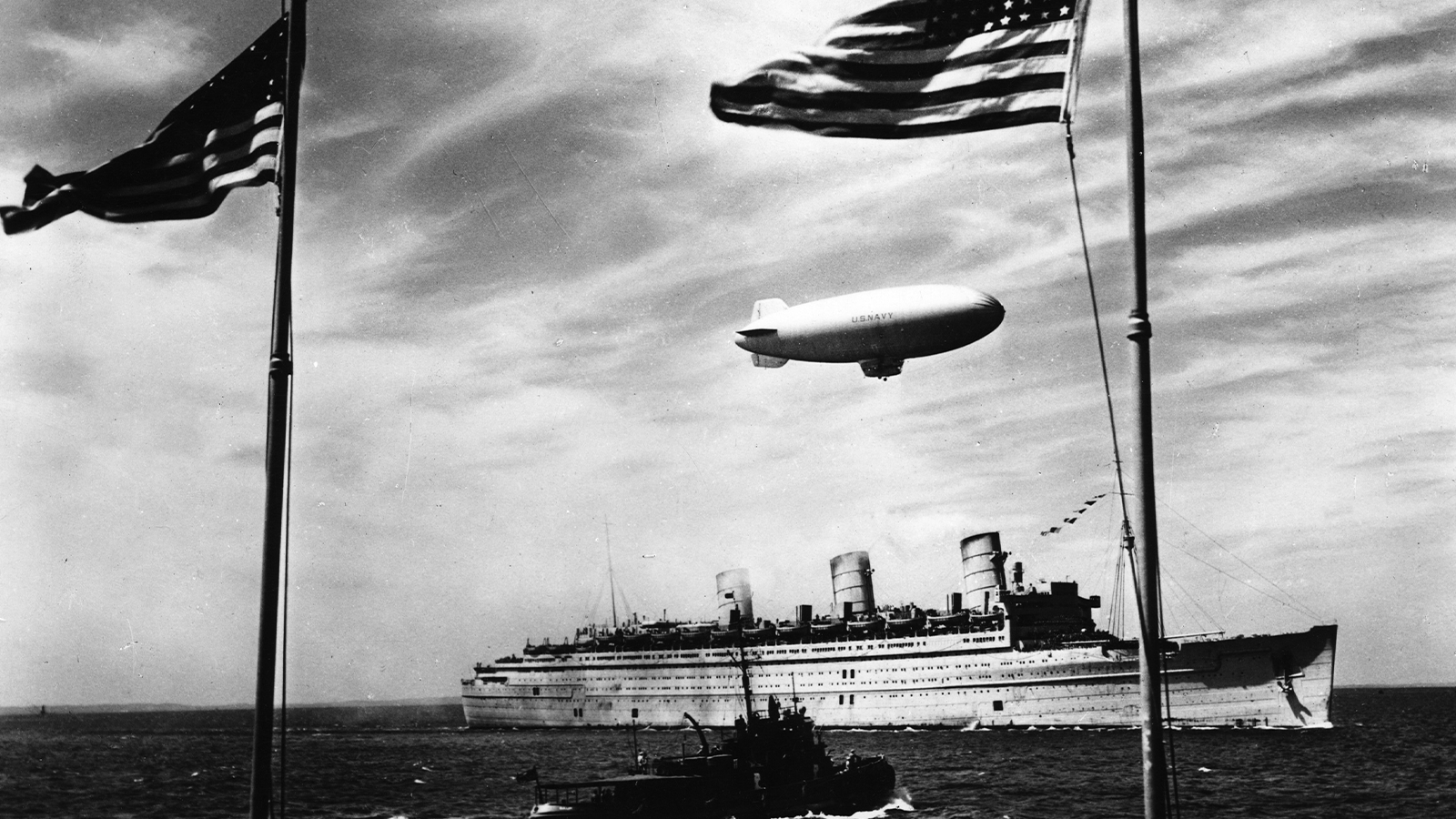
Queen Mary’s tireless war service carried her over 600,000 miles while transporting 810,000 military personnel. In 1943, she set the record for the highest number of passengers carried aboard a ship.
With her decks burgeoning at the seams, she carried 16,683 people – 15,740 of whom were troops. This record, from over eight decades ago, remains unbroken.
Queen Mary was the favoured transport of British Prime Minister Winston Churchill, who travelled further and more extensively than any other wartime leader.
Churchill believed it was important to discuss allied relations and strategy face-to-face, dotting from country to country in-order to do so despite full awareness of the danger. In May 1943, Churchill travelled on the Queen Mary from the River Clyde in Scotland to New York. Queen Mary also helped him over to Quebec and Halifax.
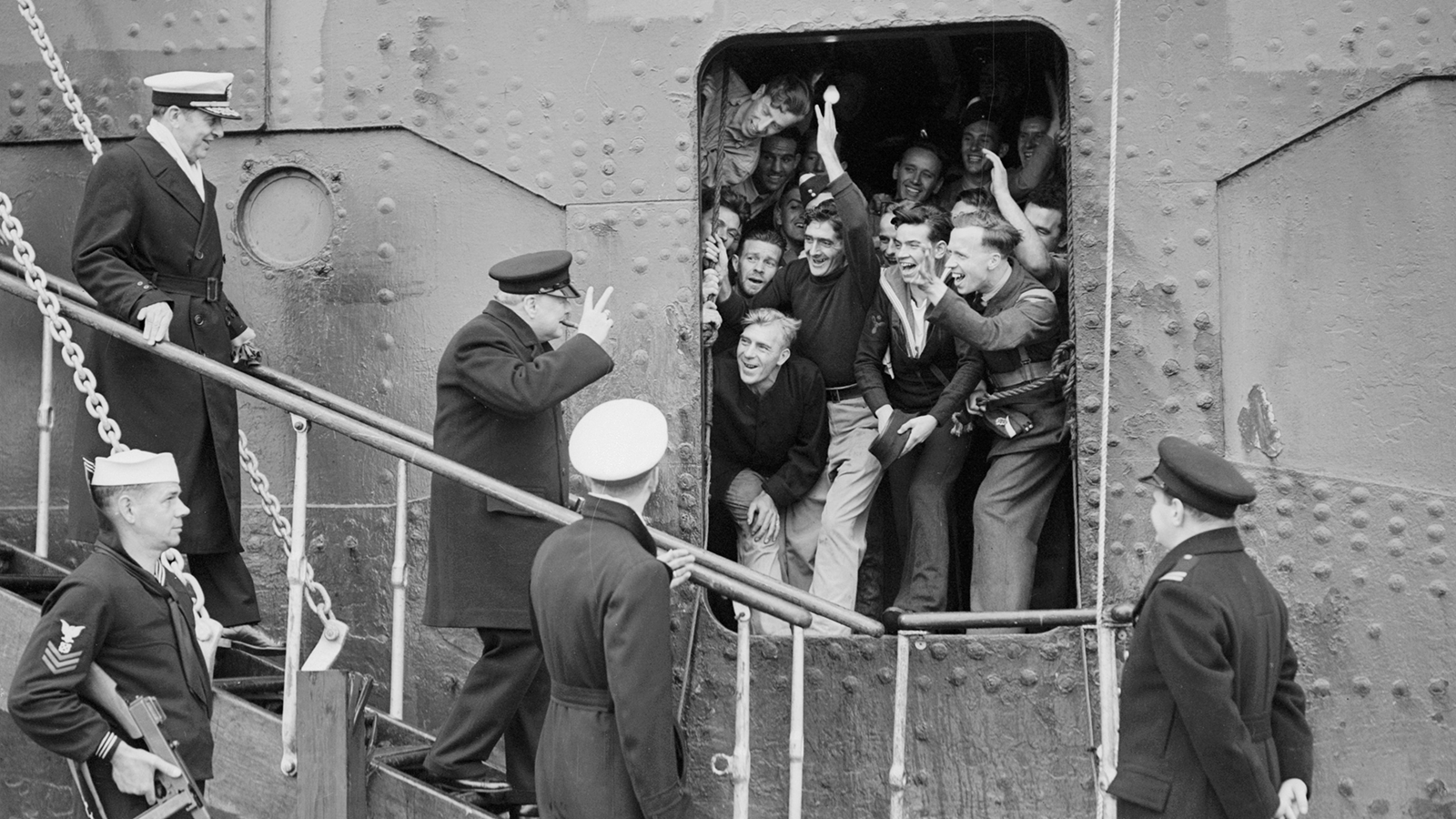
Churchill, who travelled under the alias of Colonel Warden to avoid detection, enjoyed Queen Mary’s luxury appointments and superior wartime speed of 30 knots. She won Churchill over even though he admitted to not being a natural seafarer.
It was an ongoing and beneficial relationship between them. As Winston disembarked, Queen Mary was there in the background, adding to the overall aura of state and decorum.
In Churchill’s suite aboard Queen Mary – comprising dining quarters, a map room and conference room - important allied meetings were held. Winston’s bathtub, partially filled with sand, served as a scale replica for planning the D-day landings.
Importantly, Churchill signed the D-day declaration within the Queen Mary, heralding the start of the largest military invasion of over 7,000 ships and 195,000 military personnel and leading to end of the war in early May 1945.
Afterwards, in a letter to Cunard’s Chairman Sir Percy Bates, Winston credited RMS Queen Mary and RMS Queen Elizabeth with reducing the war’s timeline. He wrote: "Without their aid, the day of final victory must unquestionably have been postponed."
Queen Mary’s ‘last great cruise’ was a social and historic event
RMS Queen Mary is famed with having received the greatest farewell ever given to a ship.
Having seized the heart of the public, in countries all over the world, it would have been inappropriate not to have a fantastic final flourish for the old girl.
And so, in October 1967, began a 39-day tour and party that would take her from her home country of Great Britain, through Europe, around the treacherous Cape Horn and up to Long Beach, California. She had travelled over three million miles during her lengthy career, so what were a few more?
Onboard, Queen Mary’s patrons were composed of those who’d travelled with her previously, press and those keen to witness history in the making. The farewell tour was geared to be both a social and historical event. Queen Mary wasn’t going to the scrapyard, she was going to a new home. The mood was notably poignant but positive.
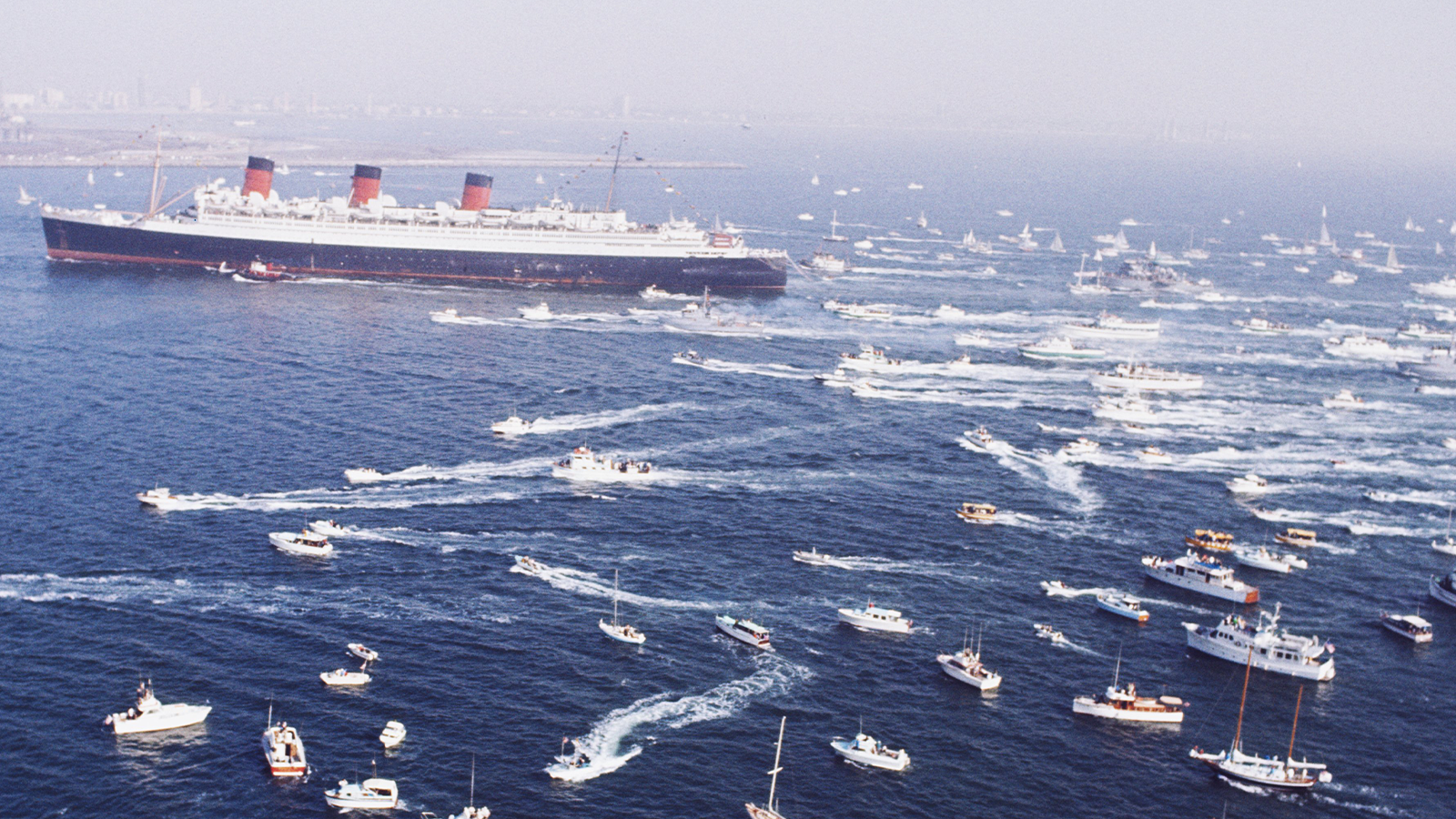
In Southampton, the dockside was bedecked with flags and deep crowds of people who had come to bid her farewell. A squadron of naval helicopters flew over the quay in anchor formation while boats rang out their whistles and dipped their ensigns as Queen Mary passed by.
Moving out towards the English Channel, moving farewells came from the P&O liner RMS Oriana and aircraft carrier HMS Hermes as the crews lined their decks, stood to attention and gave out hearty cheers to the infamous liner.
Next, it was onward to the ports of Lisbon and Las Palmas before, seven days later, Queen Mary arrived in Brazil’s Rio de Janeiro. Then, on the November 20, the Queen Mary became the largest ship ever to round Cape Horn. Back in the Britain, the UK government devalued the Pound Sterling in commemoration, providing a boost to the British economy and export market.
Queen Mary continued on via Chile’s Valparaiso and Callao in Peru. Ahead lay a tricky obstacle – going under the Bridge of the Americas in Panama. Land based officials and Captain John Treasure Jones maintained a busy dialogue as Queen Mary approached. It looked as if the mast would strike the bridge.
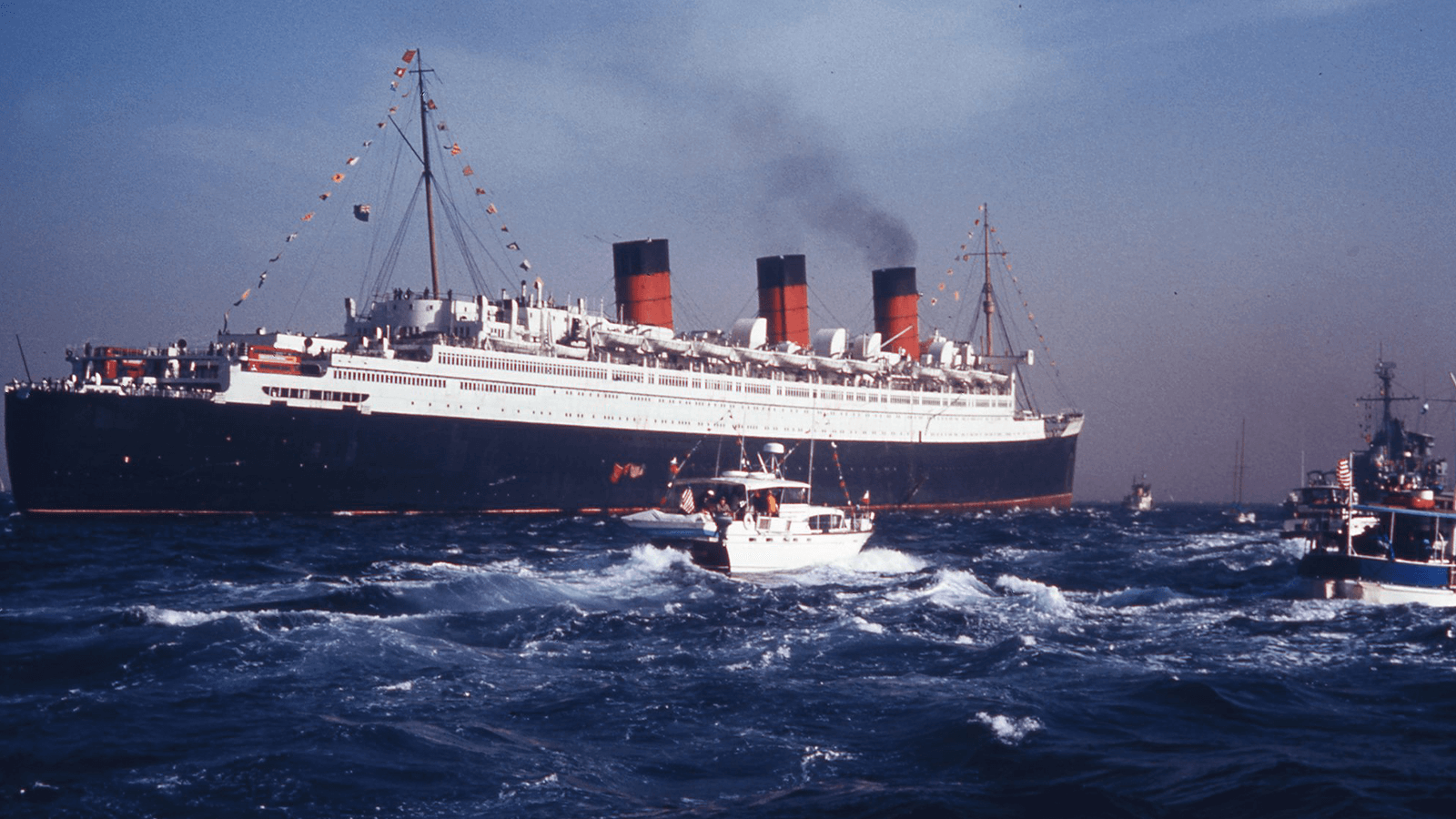
Passing under with only four feet to spare, tremendous cheers went up from the crowds aboard Queen Mary as well as onlookers above on the bridge. After an overnight in Panama, Queen Mary continued up to Acapulco before a Douglas DC-9 flew low to drop red, white and blue carnations onto Queen Mary’s deck as she neared Baja, California.
In the early morning light of December 9, 1967, Queen Mary passed by San Diego. Soon, boats started coming out of every inlet along the coast and began to follow Queen Mary, forming an Armada as they amassed.
The Coast Guard came out to ensure all was well as the number of boats swelled to five thousand while the US Navy brought along their Nuclear Cruiser Long Beach. This was the day that all of California had been waiting for. Captain Treasure Jones said it was a sight that had to be seen to be believed.
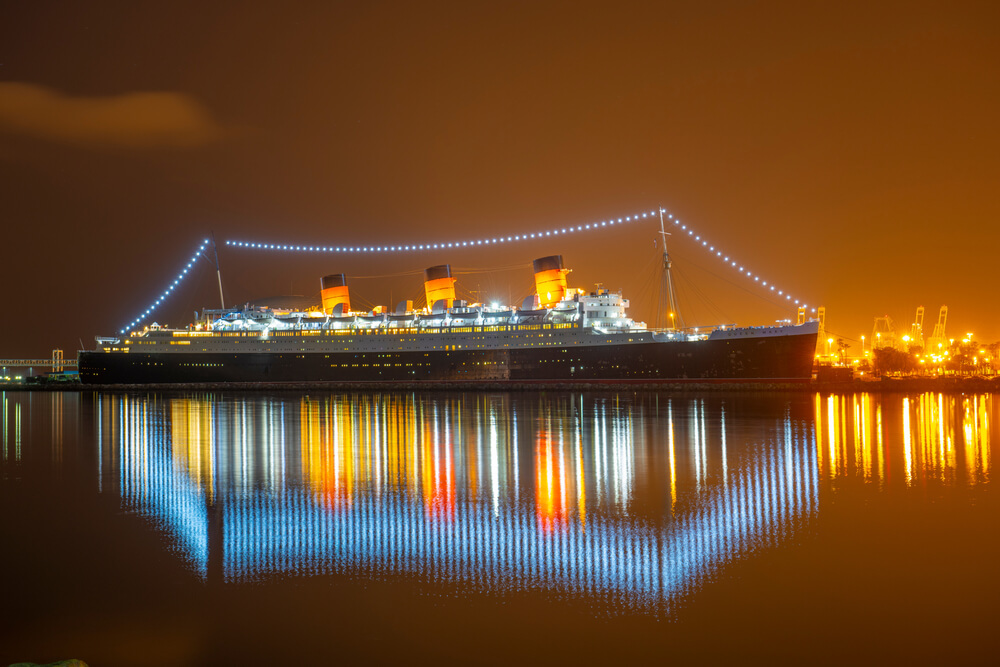
As Queen Mary pulled into Long Beach, Captain Treasure Jones rang ‘finish with engines’ for the last time. It was an emotional moment and the end of an era. Mayor Wade and Vice-Major Crowe as well as the city’s councillors and officials came out to meet Queen Mary’s crew as they stepped ashore. This marked the retirement of Captain Treasure Jones.
Two days later, on December 11, Queen Mary was signed over to Long Beach. Down came the British Ensign and Cunard House Flags and up went to the flags of the United States and Long Beach. Queen Mary had a new home after a most flamboyant and well-earned celebration on route.
Visiting the Queen Mary is a fantastic day out
Since arriving in California’s Long Beach in 1967, some 50 million people have visited the Queen Mary.
What Queen Mary has to offer has changed many times but, among her current portfolio, is capacity to be a full-service hotel, an entertainment venue, a site of fine dining, a wedding location, a historical landmark and the pride of California. Even in retirement, RMS Queen Mary finds herself in demand!
Over 200 of her first-class staterooms and suites provide accommodation while 5-star dining and one of the most romantic restaurants in America comes courtesy of Sir Winston’s Restaurant and Lounge onboard.
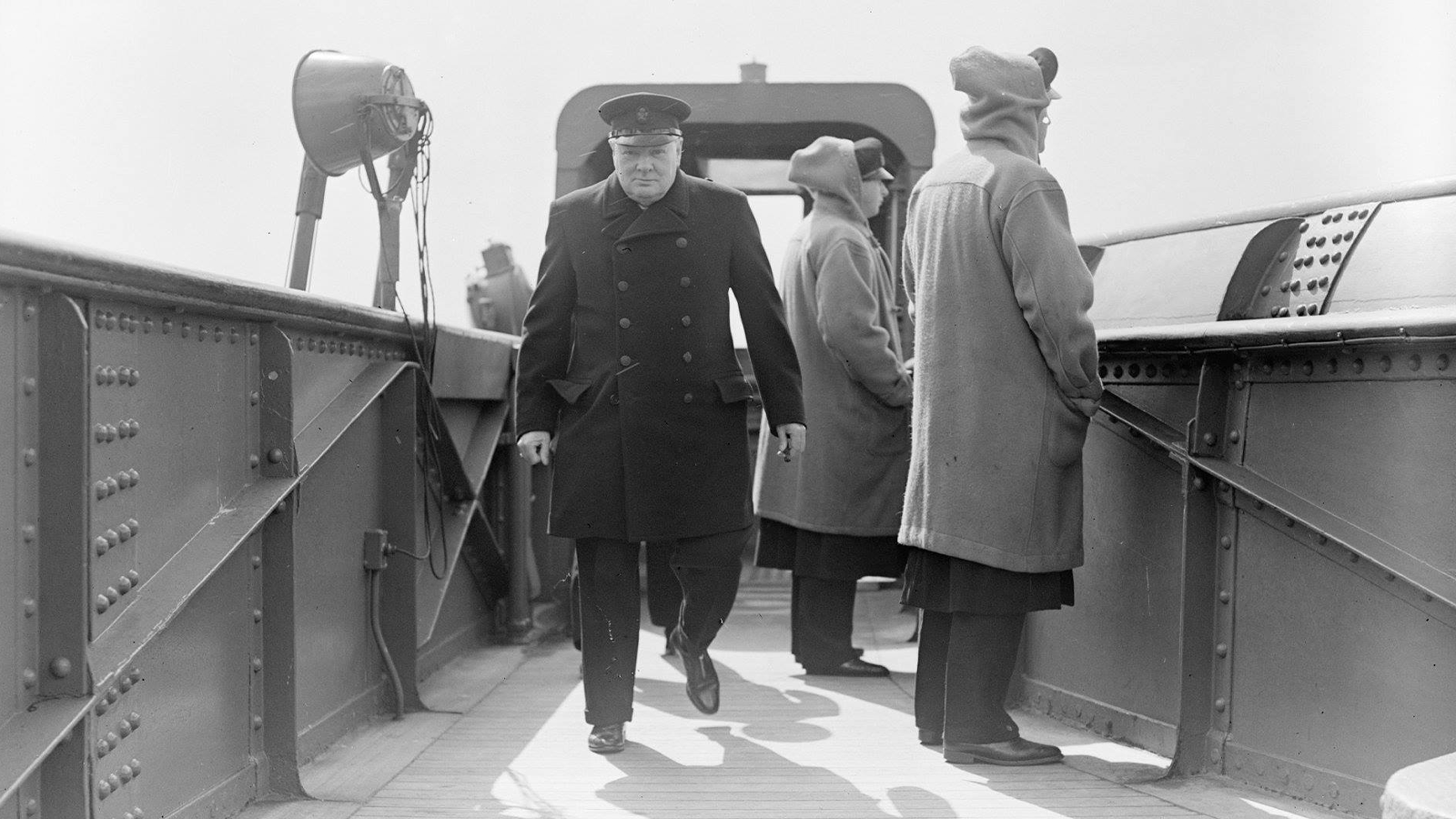
More casual catering is hosted by several cafes while a chic atmosphere and delicious cocktails await within the stylish Observation Bar and Art Deco Lounge.
Up on promenade deck, several unique retails outlets reside whilst situated all around the ship are numerous exhibitions as well as a selection of haunted tours for those after a thrill.
Visits to Queen Mary support the ship’s viability and conservation
As with the upkeep of any historical landmark, conservation is key but usually expensive. Queen Mary is no exception. This grand liner’s maintenance makes any other bill seem small!
Whether you choose to casually visit Queen Mary with a day-ticket or get much more engrossed with an annual visitor membership, all sales contribute to keeping this transatlantic icon alive.
Healthy visitor numbers give justification to the venue’s long-term plans and overall viability so, just by being present on the Queen Mary, helps to ensure future generations get to discover the best of maritime engineering and the glory days of transatlantic travel.
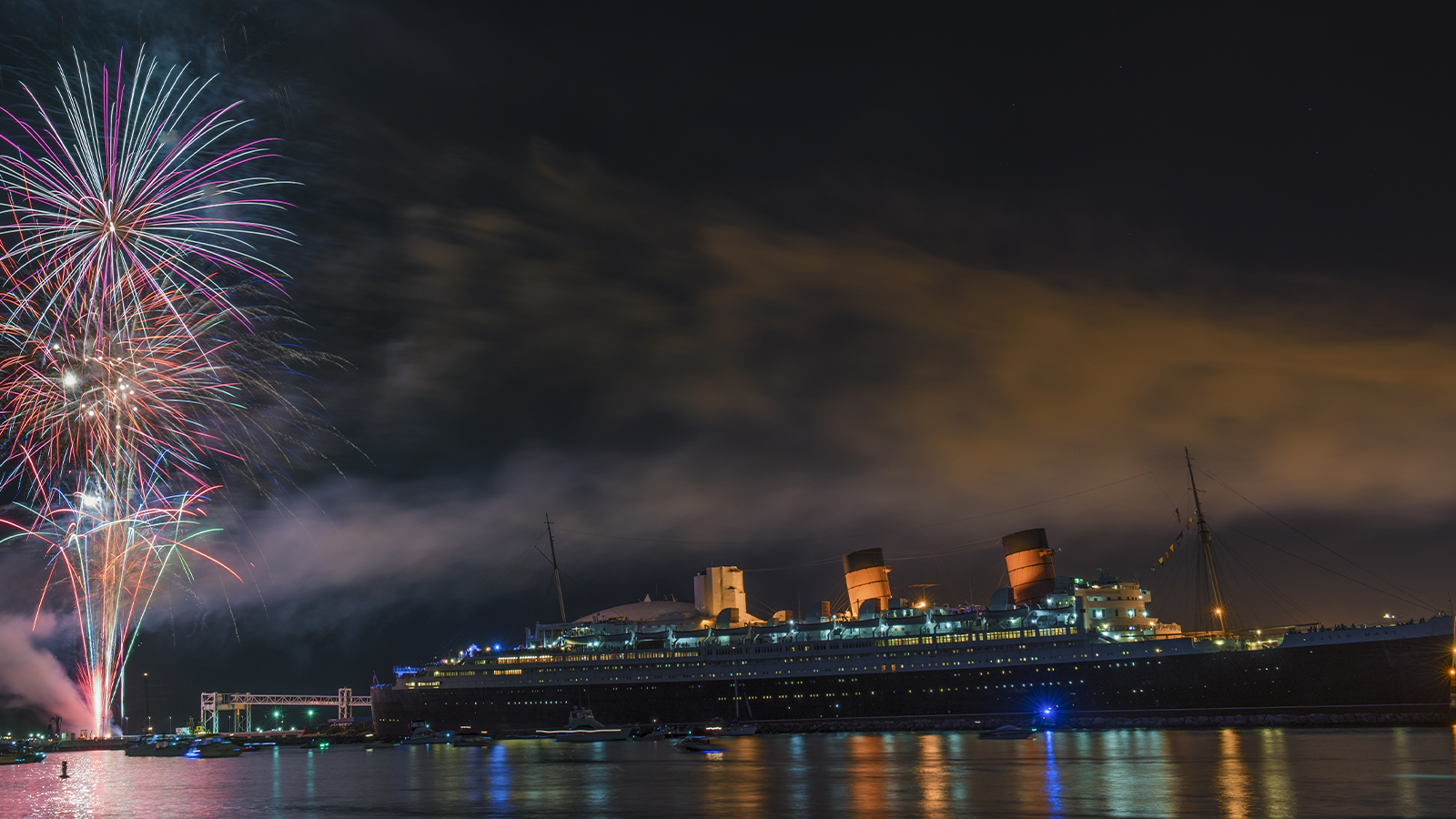
“She breathed, she had character, she had personality. She was above all else the closest ship ever to be a living being.” (Captain John Treasure Jones)
Queen Mary was a record holder in both directions across the Atlantic. She set unmatched standards in shipping refinement. She transported the big names of her time as well as several members of the Royal Family.
She was the location where Winston Churchill signed the D-day declaration and is credited for helping to shorten World War II. She remains an icon of design and opulence.
She has won hearts all over the world. She has touched millions with her grace. She is worthy of visitor attention, spiralling maintenance costs and all. She is a legend. By visiting, you keep all of her pedigree and heritage going. By visiting, you become part of Queen Mary’s story.













